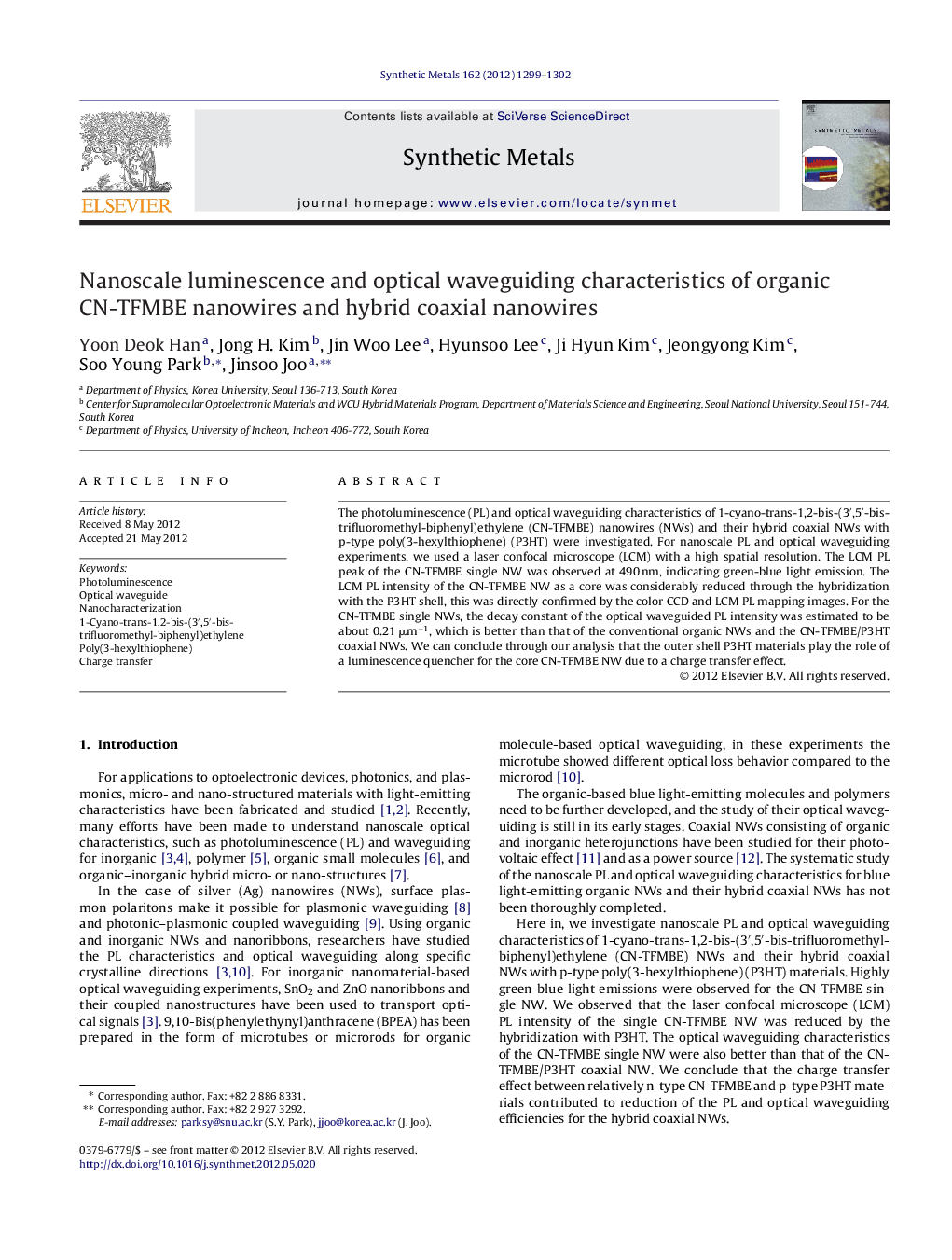| Article ID | Journal | Published Year | Pages | File Type |
|---|---|---|---|---|
| 1441678 | Synthetic Metals | 2012 | 4 Pages |
The photoluminescence (PL) and optical waveguiding characteristics of 1-cyano-trans-1,2-bis-(3′,5′-bis-trifluoromethyl-biphenyl)ethylene (CN-TFMBE) nanowires (NWs) and their hybrid coaxial NWs with p-type poly(3-hexylthiophene) (P3HT) were investigated. For nanoscale PL and optical waveguiding experiments, we used a laser confocal microscope (LCM) with a high spatial resolution. The LCM PL peak of the CN-TFMBE single NW was observed at 490 nm, indicating green-blue light emission. The LCM PL intensity of the CN-TFMBE NW as a core was considerably reduced through the hybridization with the P3HT shell, this was directly confirmed by the color CCD and LCM PL mapping images. For the CN-TFMBE single NWs, the decay constant of the optical waveguided PL intensity was estimated to be about 0.21 μm−1, which is better than that of the conventional organic NWs and the CN-TFMBE/P3HT coaxial NWs. We can conclude through our analysis that the outer shell P3HT materials play the role of a luminescence quencher for the core CN-TFMBE NW due to a charge transfer effect.
► Bright green-blue light-emission of CN-TFMBE NWs. ► Better optical waveguiding characteristics of CN-TFMBE NWs compared to coaxial NWs. ► The difference of nanoscale optical properties in coaxial NWs is due to the charge transfer effect.
